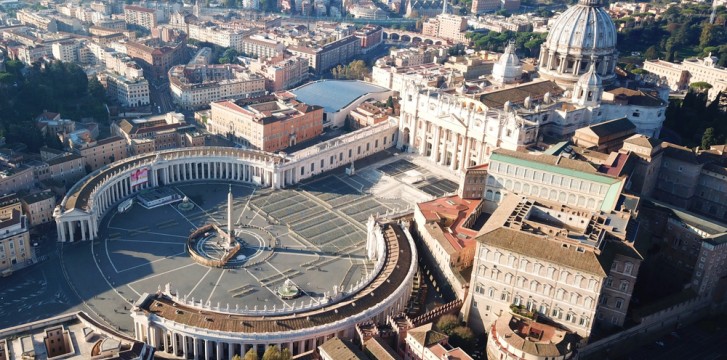Why is the Vatican in Rome?
Here is the answer to the much asked question! The Vatican is the smallest state in the world but also one of the most famous. However, many do not know its history and wonder: why is the Vatican located in Rome?
The Vatican is a well known autonomous state, and also the smallest in the world, both in size and population. Officially born when signed by the Lateran Pacts in 1929, the Papal States have an ancient and fascinating history.

Why is the Vatican located in Rome?
The Vatican is on one of the hills of Rome; in ancient times it was an uncultivated and unhealthy area. However, according to Pliny the Elder, the humid climate that characterized the hill on the right side of the Tiber river favored the growth of a special plant: a magical holm oak. It is a legend, of course, which gives the place a certain charm. Agrippinia Maggiore then had gardens built there and later Nero built a private circus there. Where the Vatican stands today, the martyrs of the first Christians took place, among whom there was also Saint Peter, Jesus's apostle.
The legend has it that Saint Peter was buried in the same place where he was crucified, in the fourth century after Christ the basilica was built in his honor above his remains, by the will of Constantine. However, at the time, the remains of the Holy Apostle had not yet been found.
Where are the relics of St. Peter?
The location of the relics of the Prince of the Apostles remained a legend until 1950. In fact, on the initiative of Pope Pius XII - who also financed the operation, in 1940 research began on the remains of St. Peter under the Vatican. Archaeological excavations continued unabated - even during the Second World War - until 1949. A Roman necropolis was found in which numerous Christians and non-Christians were buried. In 1950, Pius XII himself announced the discovery of the bones of San Pietro. Fundamental were the studies of the archaeologist Margherita Guarducci who confirmed in 1965 the identification of the remains and the tomb that bore the epigraph in Greek "Pietro is here".
Read more about:
Free entry to museums and archaeological sites in Italy on the 1st Sunday of each month
A Comprehensive Guide to Visiting the Vatican Museums: Art, History, and Skip-the-Line Tips
15 Must-Visit Museums, Galleries, and Cultural Sites in Italy
Don’t forget to check out our Social Media accounts and Subscribe to our Newsletter so you can be updated with information customized for people who want to move, live, and love Italy! Also, check out these unique tours in Rome.
FAQs for Italian Citizenship by Marriage (2023)
Understanding the Tessera Sanitaria: Your Italian Health Insurance Card
Non-Married Partners: How to Obtain a Residence Permit in Italy as De Facto Cohabitants
How to get tax identification number for foreign citizens (Codice Fiscale)
How to register in Italy as an EU citizen
Mastering Public Transport in Italy
The Advantages of Dual Citizenship with an Italian Passport: Unlocking Boundless Opportunities
What you need to know about Visas and Permits to stay in Italy




